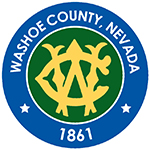Stakeholder Agencies & Collaboration
The Value of Collaboration
PCE contamination in the central Truckee Meadows is a regional issue that crosses jurisdictional, service area, and regulatory authority boundaries. This requires that a number of different agencies are affected and involved. While the Central Truckee Meadows Remediation District (CTMRD) program is spearheaded by Washoe County Community Services Department (WCCSD), the solution to our community's PCE problem requires collaboration among many stakeholder agencies. These agencies work together to define practical and effective ways to implement the program and achieve its goals. Each stakeholder agency's legislative mandate, mission, focus, and available resources shapes that agency's role and responsibilities in implementing the Remediation Management Plan.
The remediation district approach defined in Nevada state law allows for collaborative and community-based solutions. The CTMRD program, is the only one of its kind in Nevada. This unique approach allows local, county, and state agencies to work together in our community to address the PCE problem in a manner consistent with local needs, priorities, resources, and objectives. It provides for local control and serves as an alternative to federal Superfund classification (which can result in significant property devaluation, lack of liability relief for innocent property owners, and economic blight). CTMRD staff believe that this innovative program model can serve as a positive example for cost-effectively addressing large scale groundwater contamination that could be considered in other communities.
Roles & Responsibilities
Washoe County Community Services Department (WCCSD)
WCCSD is responsible for the development, implementation, and management of the CTMRD program. Specifically, WCCSD is responsible for the mitigation of PCE contamination that poses a threat to groundwater and which cannot be attributed to a specific, viable responsible party. WCCSD supports the CTMRD program with four full-time professional staff with education and experience in hydrology, hydrogeology, environmental and civil engineering, groundwater remediation, environmental project management, geographic information systems (GIS), natural resources and land use planning, drinking water treatment and distribution, outreach, and education.
WCCSD’s responsibilities also include:
- Billing those benefiting from the remediation of PCE contaminated water;
- The construction, operation, and maintenance of wellhead treatment facilities for PCE-contaminated municipal water supply wells;
- Development and implementation of the Sewer Monitoring Program (SMP) in cooperation with Reno and Sparks,
- Development, implementation, and staffing of the CTMRD Groundwater Monitoring Plan (GMP) and Potential Source Area (PSA) investigations, including contract management;
- Drafting and maintaining the RMP, including any updates to the RMP and the RMP Activity Table;
- Coordination of stakeholder agency activities that contribute to progress being made toward goals and objectives, including developing strategies for meeting challenges; and
- Facilitation and management of CTMRD program outreach efforts.
Through 2014, WCCSD also operated (as part of Washoe County’s water utility) municipal water supply wells impacted by PCE at levels below the drinking water standard. As of January 1, 2015, Washoe County’s water utility, including its municipal water supply wells, was merged into Truckee Meadows Water Authority (TMWA).
Nevada Division of Environmental Protection (NDEP)
NDEP is the state agency charged with preservation and protection of public health and ecosystem health. Among other duties, NDEP is responsible for protecting the waters of Nevada, including groundwater, from discharge of pollutants and contaminants. NDEP’s Bureau of Water Pollution Control is the regulatory agency that ensures compliance with water pollution control laws. NDEP’s Bureau of Corrective Actions oversees cleanup of releases of regulated substances and administers both the Superfund and Brownfields programs. NDEP’s Bureau of Safe Drinking Water works with public water systems in Nevada, and health districts, to ensure compliance with state and federal drinking water standards. NDEP’s Bureau of Waste Management is responsible for regulating the storage, generation, transportation, treatment, and disposal of hazardous waste.
The Bureau of Corrective Actions serves as the NDEP’s primary liaison for the CTMRD program.
Washoe County Health District (WCHD)
![]() WCHD is responsible for protecting public health in Washoe County through disease prevention, public health emergency preparedness, and environmental services. The Environmental Health Services division works with state and local agencies to address any imminent threats to human health, protect groundwater quality, and to ensure that public water systems in the county comply with the Safe Drinking Water Act and the Nevada Public Water System Construction Regulations.
WCHD is responsible for protecting public health in Washoe County through disease prevention, public health emergency preparedness, and environmental services. The Environmental Health Services division works with state and local agencies to address any imminent threats to human health, protect groundwater quality, and to ensure that public water systems in the county comply with the Safe Drinking Water Act and the Nevada Public Water System Construction Regulations.
WCHD's role is to ensure CTMRD program activities are consistent with WCHD policies and requirements, and to step in where any imminent threats to human health are identified. WCHD works with NDEP and/or WCCSD during the evaluation and mitigation of PCE source areas. In a manner similar to NDEP, WCHD has responsibility for programs that may influence CTMRD program implementation including: Underground Storage Tanks (UST); safe drinking water; and air quality programs. WCHD also inspects facilities and regulates users of hazardous materials and conducts activities related to education and enforcement. Should there ever be an imminent health risk associated with a release or discovery of PCE, WCHD would be in charge of managing the response to ensure the protection of public health.
Truckee Meadows Water Authority (TMWA)
 TMWA is the primary municipal water purveyor in the Reno/Sparks area. While TMWA typically obtains 85% of its water supply from the Truckee River each year, groundwater is needed to meet summertime water demands, and for providing water when surface water is unavailable. TMWA owns more than 30 groundwater wells, five of which operate with wellhead treatment systems that remove PCE from groundwater. Operation and ongoing management of TMWA's municipal water supply wells, including aquifer recharge operations, are important parts of the implementation of the Remediation Management Plan.
TMWA is the primary municipal water purveyor in the Reno/Sparks area. While TMWA typically obtains 85% of its water supply from the Truckee River each year, groundwater is needed to meet summertime water demands, and for providing water when surface water is unavailable. TMWA owns more than 30 groundwater wells, five of which operate with wellhead treatment systems that remove PCE from groundwater. Operation and ongoing management of TMWA's municipal water supply wells, including aquifer recharge operations, are important parts of the implementation of the Remediation Management Plan.
WCCSD and TMWA work together through the Pumping Plan agreement to ensure that "remedial benefit" is achieved each year without compromising TMWA's ability to operate its water system to meet drinking water quality standards (specifically arsenic). If the maximum contaminant level (MCL) for PCE becomes more stringent in the future, additional TMWA groundwater supply wells may require treatment systems. TMWA is responsible for providing WCCSD annualized water use information for parcels within its service area; these data are used to calculate the Remediation Fees assessed to fund the CTMRD program.
City of Reno & City of Sparks
The Environmental Control Sections (ECS) of City of Sparks and City of Reno both review and approve Business License Applications and issue Environmental Control Permits to dry cleaners and Industrial Users who may have PCE or other dry cleaning solvents on site. The ECS staff provide regulatory oversight to ensure that PCE storage, use, and disposal practices are in compliance with Environmental Control Permit conditions, as well as the municipal code and relevant Washoe County articles.
Since both cities own and operate the sanitary sewer systems that collect wastewater in their jurisdictions, they work with PCE-using businesses to limit both illicit and accidental discharges to the environment. If there is an impact to the sanitary sewer or storm drain system, it is addressed immediately, regardless of whether the impact is related to PCE or some other product of concern. The cities require clean up, and may issue enforcement actions if appropriate.
Working Together to Achieve Program Goals
Collaboration among stakeholder agencies is a key reason why the CTMRD program has been successful in efforts to maintain the viability of groundwater as part of the municipal water supply in southern Washoe County. These collaborative efforts focus CTMRD program activities and goals on four key objectives:
- Mitigate existing PCE contamination of groundwater resources and deliver safe drinking water;
- Prevent additional groundwater PCE contamination from occurring;
- Protect those parts of the aquifer system that have not been contaminated by PCE; and,
- Inform stakeholder agencies, the public, the business sector, and other interested parties of CTMRD program activities.



